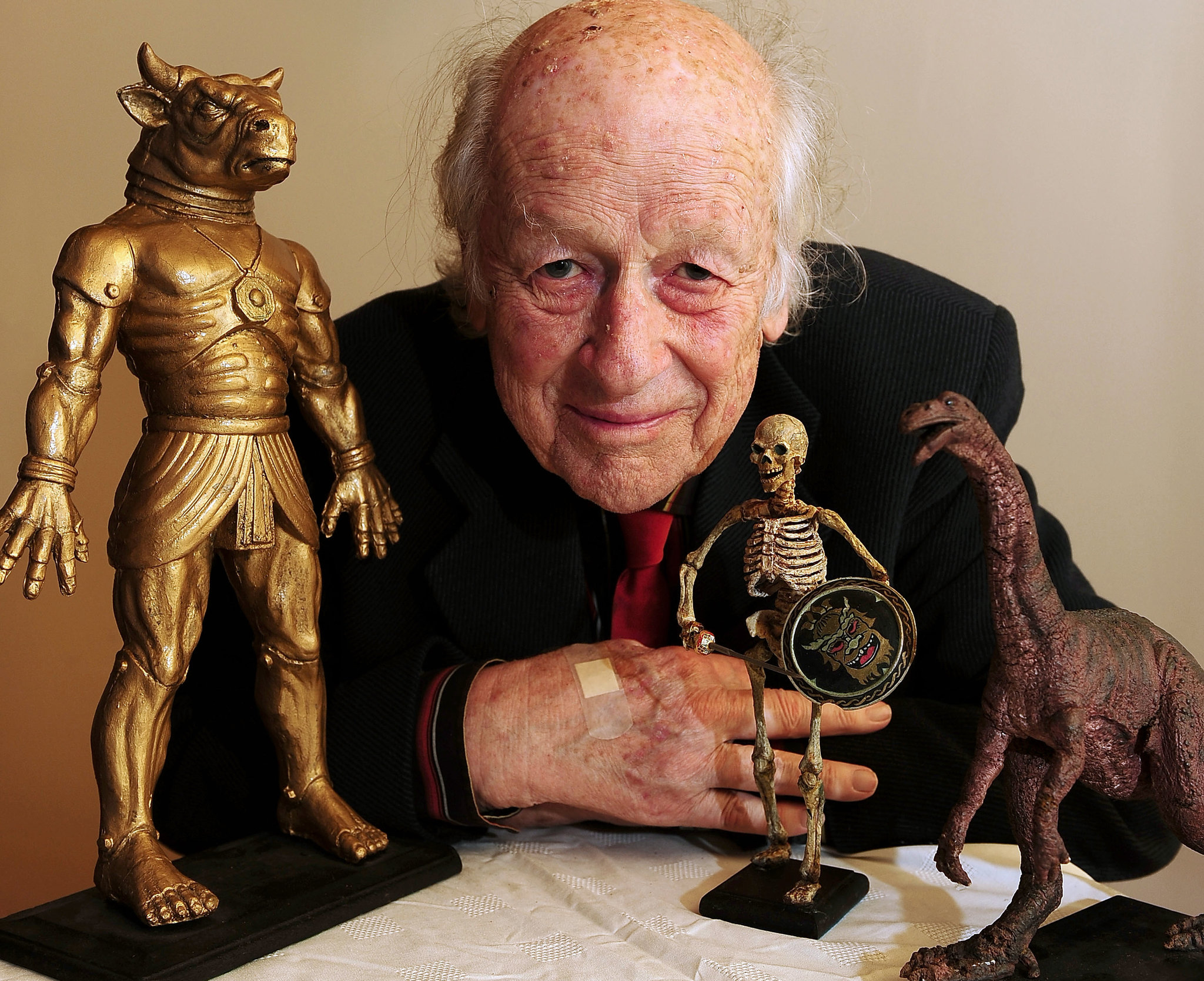Ray Harryhausen
Filed under: People, Animator, Producer, Screenwriter, Special Effects Animator, 1950s, 1960s, 1970s, 1980s, Stop Motion, Technicolor, U.K., U.S.A.,
 Full Name:
Full Name:Ray Harryhausen
Occupation / Title:Animator, Producer, Screenwriter, Special Effects Animator
Date of birth:29/06/1920
Date of death:07/05/2013
Birthplace:Los Angeles, California, USA
Biography
Ray Harryhausen is an American-British screenwriter, animator, and special effects designer known for integrating stop-motion animation into real-action films.
Amazed by animation from The Lost World (1925) and King Kong (1933) by Wilis O’Brien, Harryhausen studied films at the University of Southern California in Los Angeles (Encyclopedia of World Biography Online). In 1940, Harryhausen worked with Hungarian film producer George Pal on Puppetoons, but quit after 13 episodes due to limited expression of animation (Ibid.).
During World War Two, Harryhausen enlisted in the Army Signal Corps under director Frank Capra to work on propaganda and training films, of which he produced a short technical film How to Bridge a Gorge (1941) and Guadalcanal (Newsmakers).
O’Brien invited Harryhausen to join his project on Mighty Joe Young (1949) after he returned from war, which later won an Academy Award for special effects (Ibid.). The two worked on two additional projects with both not coming true, hence Harryhausen departed for independent shorts inspired by fairytales, including The Story of Little Red Riding Hood (1950), The Story of Hansel and Gretel (1950), and The Story of King Midas (1953). He received his first solo special effects commission for The Beast from 20,000 Fathoms (1951), which was also the first film to inaugurate dynamation, or the split screen technique, in which a miniature model inserted into the frame visually appeared to be much larger than the actors it interacted with. The film brought Harryhausen to the attention of Columbia producer Charles Schneer, who invited him for the monster movie It Came from Beneath the Sea (1955) (Ibid.).
Harryhausen moved forward to coloured mythology-inspired films, initiating with The 7th Voyage of Sinbad in 1958, which featured animated monstrosities such as a cyclopean beast, a 2-headed bird, and a dragon (Encyclopedia). Jason and the Argonauts (1963), later a cult classic, was considered Harryhausen’s peak work. The most well-known battle with a skeleton army took Harryhausen four months to complete single-handedly (Ibid.).
Harryhausen later experimented with new genres in sci-fi and dinosaurs in First Men in the Moon (1964), One Million Years B.C. (1966), and Valley of the Gwangi (1969) (Walker-Werth).
During the 1970s and 1980s, Harryhausen’s career was not ideal. Although he produced two more films on Sinbad, namely The Golden Voyage of Sinbad & Sinbad and the Eye of the Tiger, their stop-motion special effects seemed outdated given the rapid development of blockbusters that “revolutionized movie making” (Ibid.). After Clash of the Titans (1981), Harryhausen retired from the film industry (Newsmaker).
He died in London, England, in 2013.
References:
“Ray Harryhausen.” Encyclopedia of World Biography Online, vol. 34, Gale, 2014. Gale In Context: Biography, link.gale.com/apps/doc/K1631010099/BIC?u=utoronto_main&sid=summon&xid=c3d636b1. Accessed 5 Sept. 2024.”Ray Harryhausen.” Newsmakers, vol. 3, Gale, 2014. Gale In Context: Biography, link.gale.com/apps/doc/K1618006122/BIC?u=utoronto_main&sid=summon&xid=1dc7165a. Accessed 5 Sept. 2024.
Walker-Werth, Thomas. “Ray Harryhausen: Giving New Life to Old Legends.” The Objective Standard, vol. 16, no. 4, winter 2021, pp. 49+. Gale In Context: Canada, link.gale.com/apps/doc/A688053706/CIC?u=utoronto_main&sid=bookmark-CIC&xid=cc7f78da. Accessed 5 Sept. 2024.
